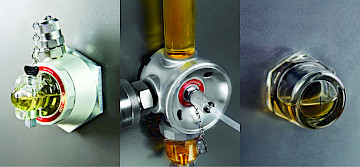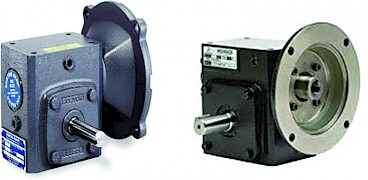Playing the Long Game With Condition Monitoring
 Often in Machinery Lubrication magazine, there are informative articles about condition monitoring, lubricant analysis, and troubleshooting. However, there has yet to be an article that actually trains the reader. My goal is to provide a brief training guide to condition monitoring inspections for mechanics, lubricators and even some operators. This will serve as more of a reference, or a “how-to,” regarding condition monitoring hardware inspections.
Often in Machinery Lubrication magazine, there are informative articles about condition monitoring, lubricant analysis, and troubleshooting. However, there has yet to be an article that actually trains the reader. My goal is to provide a brief training guide to condition monitoring inspections for mechanics, lubricators and even some operators. This will serve as more of a reference, or a “how-to,” regarding condition monitoring hardware inspections.
Condition Monitoring and Associated Cost
Condition Monitoring is the process of monitoring a parameter of condition in machinery (lubrication, vibration, temperature, etc.) in order to identify a significant change that is indicative of a developing fault. Condition monitoring is a proactive approach to maintenance and lubrication, and we want to stay vigilant with our machinery in order to keep it and our plant operating as smoothly as possible. Granted, a large part of how well or poorly a plant performs in this area could be due to the nature of what is being manufactured. For example, a cement plant has literal tons of excess dust covering the machinery. It is nearly impossible to keep clean, much less monitor the condition of the lubricant.
Knowing this, I feel as if I need to write a disclaimer: I understand that in these “severely dirty” types of manufacturing, some condition monitoring practices and tasks just can’t be completed, simply due to the amount of contaminants and even the product itself nearly burying the machine. It sounds unlikely, but we do see it quite often. What facilities like this should focus on is the machinery that can be saved. If the pump is filled with product, such as asphalt, sealant, corn dust, cement, and sometimes even process fluids, and that material/contaminant is covering sight glasses, vent plugs, or breathers, that pump is just too far gone. I would consider that unsavable, meaning it will cost more personnel hours and money to recover it rather than just replace it and start with a clean slate. When managing a condition monitoring program, the facility needs to spend money to save money, having faith that it will save even more money in the long run. Remember, we’re playing the long game; you will not see too many instant large sum savings right out of the gate.
Condition Monitoring Hardware
 On the front lines of condition, monitoring are the personnel. Humans come with a set of condition monitoring tools: our eyes, nose, ears, and hands. Spending every single day in the plant, you become very in tune with the performance of the machinery via your senses. You know what it normally smells like, the temperature in the area, and the way the machines sound because you hear them every day. When something is out of whack, it should be fairly noticeable. As far as condition monitoring hardware goes, the facility needs to consider a few different factors when setting up hardware modifications
On the front lines of condition, monitoring are the personnel. Humans come with a set of condition monitoring tools: our eyes, nose, ears, and hands. Spending every single day in the plant, you become very in tune with the performance of the machinery via your senses. You know what it normally smells like, the temperature in the area, and the way the machines sound because you hear them every day. When something is out of whack, it should be fairly noticeable. As far as condition monitoring hardware goes, the facility needs to consider a few different factors when setting up hardware modifications
We can start by asking ourselves: Is sampling being done currently, or is it going to start being sampled in the future? Not sampling and don’t plan to? A 3D bullseye would work fine and is cheaper than a CMP and hub. Why wouldn’t we invest in hardware that brings us closer to our ultimate reliability goal?
Is the equipment considered a “throw and go” or run-to-failure piece of equipment? Most facilities have these small gearboxes; they are lubricated, and they have ports for hardware, but they are just going to be replaced. We aren’t necessarily trying to extend the life of this gearbox through condition monitoring practices; it simply isn’t worth the trouble and cost of installing hardware.
Inspections
 Condition monitoring stripped to its core is trending data of in-depth inspections on the machinery and lubrication. Yes, there is vibration and thermography, among other things, but this is Machinery Lubrication magazine, so we are going to stick with the lubrication side of condition monitoring. As mentioned before, we need to first utilize our senses, so we approach the equipment and methodically inspect the entire train. Remember to take notes, and pictures and always record the findings of the inspection. A large part of why we inspect is to trend data over time to track the performance of our machine. With this trending data, we can often predict machine failure before it happens, and we may even be able to prevent it from happening. This is also an excellent way to track the progress of the lubrication program as a whole. A key performance indicator of how well the plant is operating is often found in proactive condition monitoring practices like frequent, thorough inspections.
Condition monitoring stripped to its core is trending data of in-depth inspections on the machinery and lubrication. Yes, there is vibration and thermography, among other things, but this is Machinery Lubrication magazine, so we are going to stick with the lubrication side of condition monitoring. As mentioned before, we need to first utilize our senses, so we approach the equipment and methodically inspect the entire train. Remember to take notes, and pictures and always record the findings of the inspection. A large part of why we inspect is to trend data over time to track the performance of our machine. With this trending data, we can often predict machine failure before it happens, and we may even be able to prevent it from happening. This is also an excellent way to track the progress of the lubrication program as a whole. A key performance indicator of how well the plant is operating is often found in proactive condition monitoring practices like frequent, thorough inspections.
What to look out for
Just like an emergency situation, as you approach the scene, pay attention to ambient conditions to ensure safety and absolute awareness.
- Is it a hotter day than normal? This can cause an obvious spike in operating temperature.
- Is it more humid? Humidity can have an adverse effect on desiccant breathers.
- Is there any fluid on the deck, skid or ground?
- Has the equipment been exposed to direct water recently, such as rain, nearby steam or spray?
- Are there any differences in smell? Can you detect sulfur, mildew, fuel, etc.?
- Are there any odd noises or excessive vibrations coming from the equipment?
Next, let’s take a look at the foundation and mounting hardware for the train.
- Is the foundation cracked? Are there obvious signs that something is wrong?
- Is the mounting hardware firmly in place, not showing threads or signs of backing out or breaking?
Finally, we will inspect the condition of the lubricant and the condition monitoring hardware already on the equipment. I like to inspect from the bottom up, utilizing a good flashlight.
- Check the BS&W bowl, and purge the water if necessary. Make sure it isn’t leaking from the threads. Check the purge valve for bending or any leaking or cracking.
- If the equipment has a constant level oiler, make sure that it is ¾ full and the oil within is clean.
- Next, we will look at the sight glass. If it is a 2D, write a work order to replace it with a 3D bullseye; this will make inspecting and monitoring much easier.
- Check the sight glass for proper oil level and lubricant condition.
- If it is a columnar level gauge with a tube back to the headspace or breather, check that the oil is at the proper operating level.
- Then inspect the vent tube for drying, cracking or saturation. If the oil is climbing the vent tube, then the machine isn’t breathing properly and further troubleshooting needs to be done. Report immediately.
- Check for lubricant contaminants such as particles, wear debris, shiny flakes, etc.
- Check the lubricant colour and characteristics. Is it milky, watery, foamy or discoloured?
- If the sight glass is stained, replace it.
- Then inspect the breather/vent plug. If a vent plug or particle breather is installed, inspect for any abnormal conditions, i.e., bending, breaking, or obvious saturation, and replace it with a desiccant if applicable.
- If a desiccant, then inspects the media for discolouration and replace it if necessary.
Special consideration should be taken when inspecting large circulating systems like reciprocating compressors or hydraulic reservoirs. Take the same “from the ground up” approach.
- Observe the ambient conditions around and near the system.
- Inspect the skid, and the reservoir area, and do a quick walk around of the system for safety.
- Especially watch out for leaks and funky smells, as these are highly critical pieces of equipment and could potentially cost millions of dollars to repair.
- Inspect the filter(s) and piping.
- Inspect the sight glasses (many circulating systems have multiple in-line sight glasses). This is an important step - problems with these sight glasses can draw the technician a map leading to potential failures.
- Finally, check the entire reservoir for cracking, any broken or missing mounting hardware, or any other abnormal conditions.
I want to reiterate how important it is to take pictures and notes and then report and record findings. Remember, we are trending this data in order to stay on top of machinery performance. Inspections should be taken very seriously, and they should be performed often. Inspections are easy enough to perform that you can almost inspect equipment while walking through the plant. Including condition monitoring tasks such as inspections in your routes is a great way to get ahead of the curve on your facility’s way to a world-class lubrication program.
